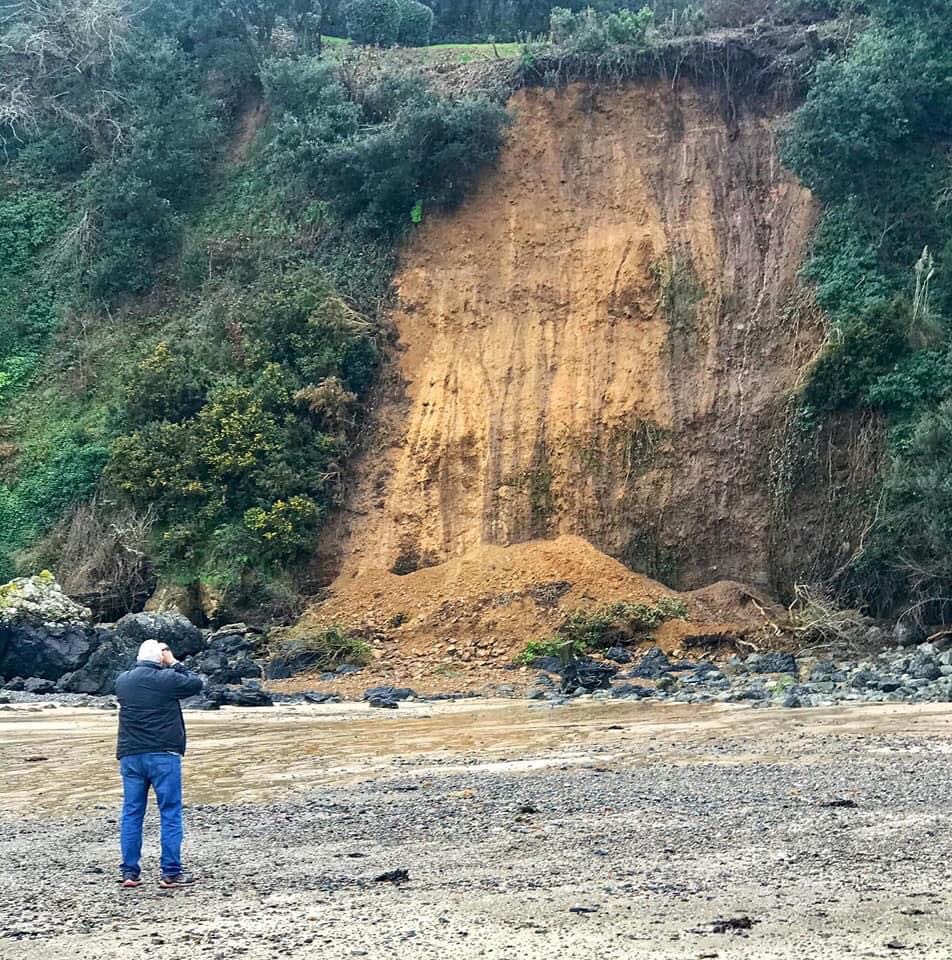


The Government has said it won’t be undertaking any stabilisation works after a “spectacular” landslide in St. Aubin because the land is privately owned and “subject to natural coastal erosion.”
Signs have been put up, however, and islanders are being warned to keep away from the La Hosse area, which is known as ‘Pebble Beach’.
Officials are attributing the landslide to the heavy rainfall of the past months loosening up the materials inside it.
The landslide was initially spotted at the start of this week by walkers, who were quick to share their findings with the 'St. Aubin's Village Association', which warned islanders to take care on the beach on Facebook.
Tristen Dodds, Head of Transport and Infrastructure for the Growth, Housing and Environment Department, told Express that the process was a natural one.
He explained that the cliff face is known as a 'sandy conglomerate', a matrix of pebbles and finer grained sediments like "sand or silt which fills the gaps between the larger materials which are basically cemented together effectively."
These 'sandy conglomerates' are not an uncommon feature of the island - Mr Dodds illustrated that there were several similar surfaces around northern coastal areas, and places like Beauport, Ouiasné, Bonne Nuit and Portelet.
When there is heavy rainfall, he said that the sand particles are saturated and lubricated by the groundwater, meaning the "matrix of loose material which has been squashed and cemented together" comes slipping down.

Pictured: The loose cliff at St Aubin is what is referred to a 'sandy conglomerate'. (Jill Browne)
This is apparently a fairly regular occurrence for such geological sites and "an ongoing process which shapes the island", he explained, citing Giffard Bay as somewhere less visible that it happens.
However, Mr Dodds remarked that this example was an exception as "a relatively spectacular event which is in an area that is really accessible."
Though Infrastructure officials have put up a number of signs warning residents against walking near the cliff, the Government will not be acting any further on it.
This, Mr Dodds said, was because the site is "unprotected, it’s got no sea wall there, and it’s recognised as being subject to natural coastal erosion, so we wouldn’t take any action to coastal engineering" in addition to being privately-owned land.
He recommended that islanders refrain from spending a long time under steep loose cliffs.
"You never really know what might happen - it will stabilise for a period, and then at some point in the future it will probably slip again."
Comments
Comments on this story express the views of the commentator only, not Bailiwick Publishing. We are unable to guarantee the accuracy of any of those comments.